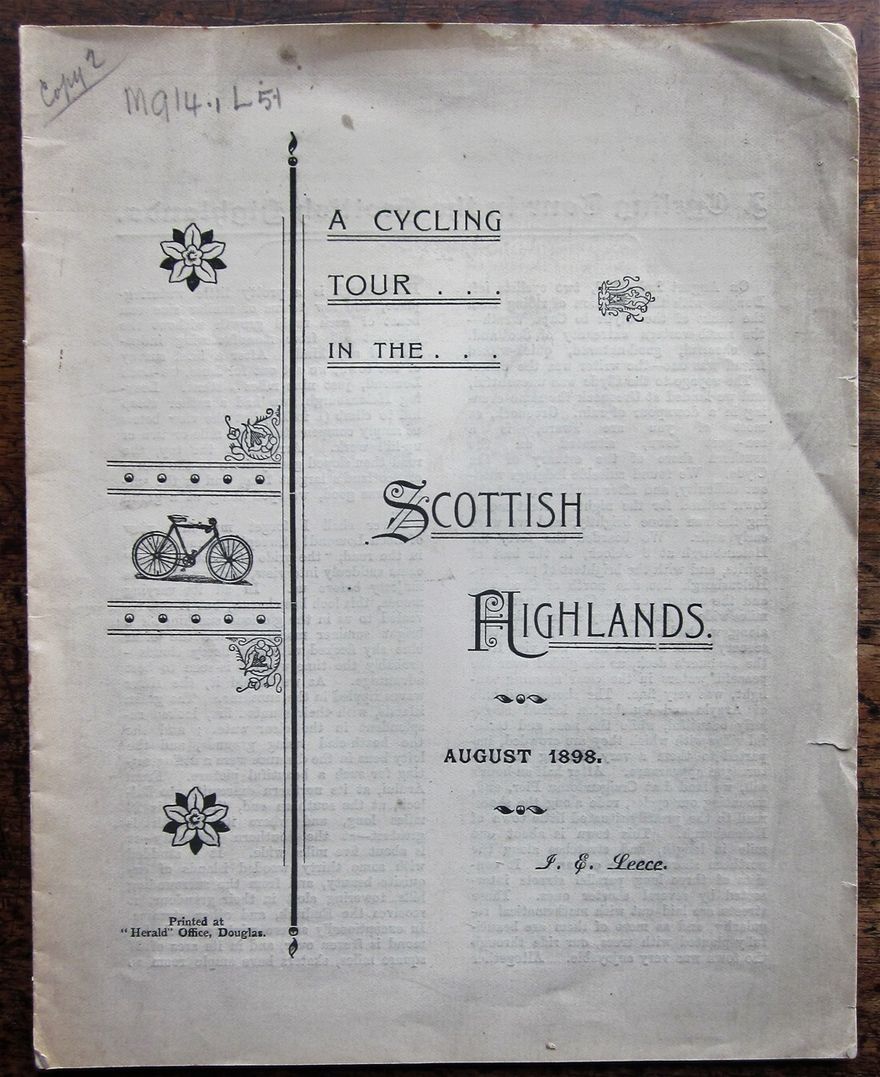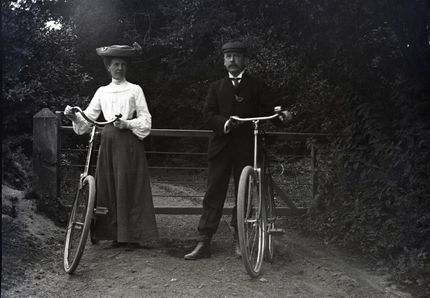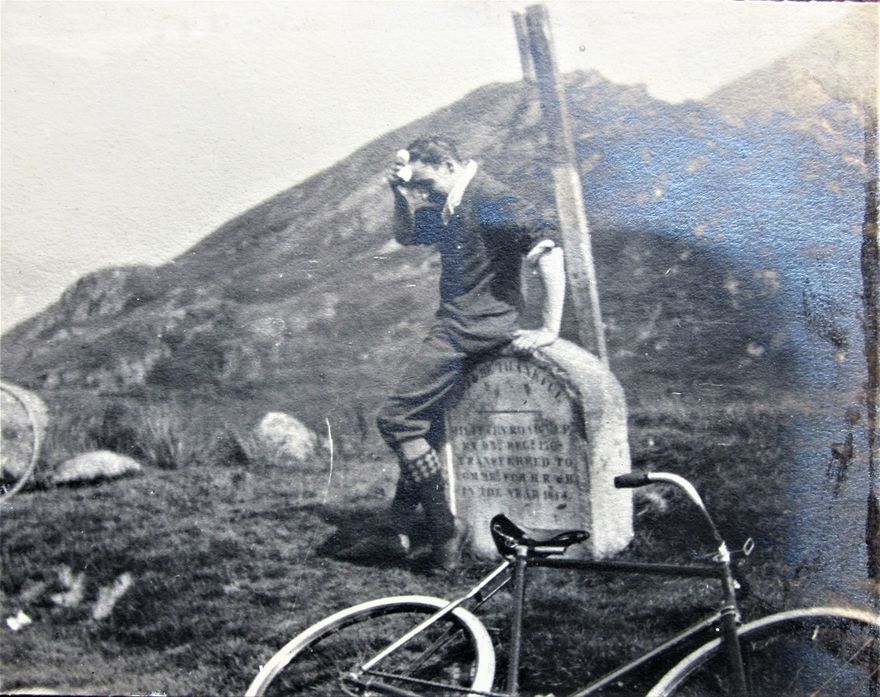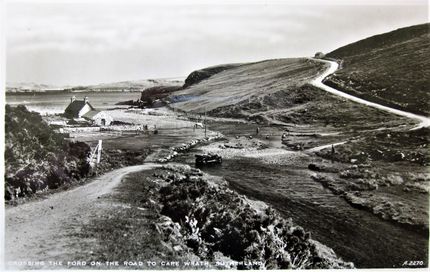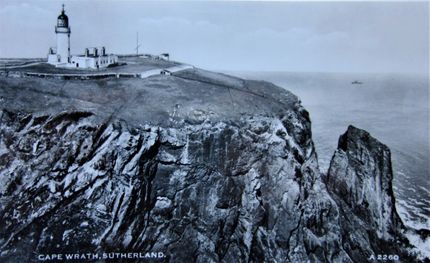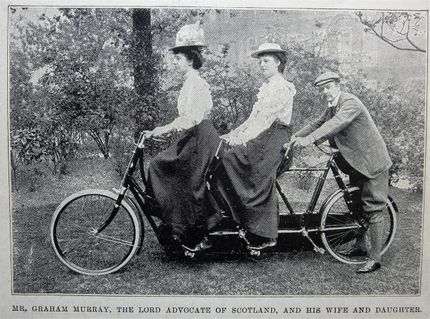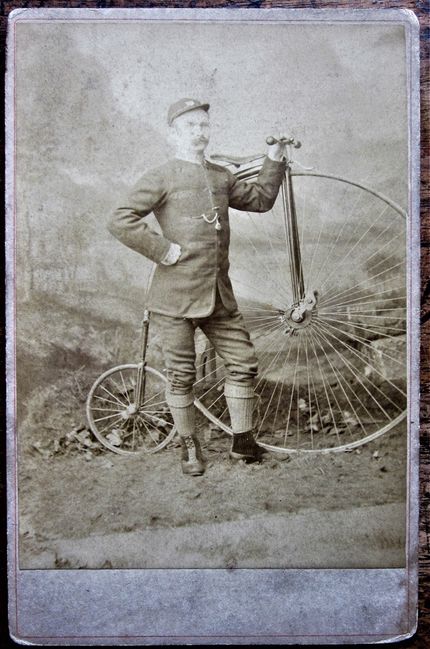Intrepid Cyclists: two accounts, this one titled A Cycling Tour in the Scottish Highlands, August 1898.
The account, by J.E. Leece, is on 12 pages. "Printed at the 'Herald' Office, Douglas."
The invention of the bicycle brought about something of a revolution for many people during the 19th century. It provided a comparatively cheap mode of transport, at a time when more and more of the population had time and money for leisure activities.
A smart pair of cyclists, date, place and photographer unknown.
The two cyclists whose account I am following here on this page hail from the Isle of Man. They set off on August 2nd., 1898, with the intention of going as far north as Cape Wrath. They enjoyed a road "like a billiard table" along Loch Lomond, but enjoyed less the torrential rain that began as they pushed on for Fort William from Tyndrum. However, they were philosophical: "man proposes, and God disposes". The rain continued on the following day when they entered Glen Coe, passing "a number of cyclists going south, a large percentage of whom were ladies." The road was "hard but unequal from the engineering difficulties of the country, from the frequent impractability of forming drains below it, and from the avalanches of debris which at times sweep down from the dark heights which so steeply overhang the route."
They were a little alarmed at the cost of the ferry at Ballachulish (3d per head and 9d for the bicycles), and at Onich allowed a funeral cortege containing "hundreds of people" to pass, struck in particular with the "fine muscular, sturdy men who were attired in Highland costume." The road from Fort William was "very poor, and we had to cross a number of river beds in which the water was sometimes 6 or more inches deep." They spent two days in Inverness, where they attended the service at the Gaelic Church. "Young men, have you got the Gae'ic" was the only English they heard that morning, asked as they entered the building. The "drawling, melacholy music" reminded them of a similar service held at the Palace Opera House on the Isle of Man the previous December.
North of Inverness, they chose the shortcut over Struie down to Bonar Bridge (rather than following the main road via Tain), "but before we arrived at our destination, we were of the opinion that it is sometimes wise to go 'round about for shortness' (it is a long slow climb up and over Struie).
A cyclist recovers after the long, slow climb up to Rest and be Thankful in the Glencoe district. A photo dated 1899 on the back.
They continued on towards Lairg. "I asked a passer-by 'How far to Lairg?' 'How far to Lairg?' said he, 'Why, you are there!' " The size of the type on the map had led them to expect a town of, say, 100,000 inhabitants! They stayed in Sutherland for two weeks, calling it "the wildest and bleakest county in the British Isles." They learnt much about it from "an intelligent shepherd lad, in whose company we spent many pleasant and profitable hours", and were not the first travellers to the region to be struck by the "great hospitality" shown by the local residents.
Their final destination was the lighthouse at Cape Wrath, and they were clearly expected: at Durness, "after shouting and signing for about half-an-hour, we attracted the attention of the ferryman, who in due course rowed us over the mile, or thereabouts, of sea water that divided the banks of the Kyle at that particular spot. He asked if we were the two gent'emen from the Isle of Man, and on answering in the affirmative, he said he had been looking out for us for about a week. He took us into his cottage, and his good wife prepared tea, with which we washed down the hard seabiscuits which formed the principal course of our menu." The road to the lighthouse was "exceedingly dangerous in some places - cut out of the side of a hill without any fencing on the lower side...yet we carried no lights, as the twilight in these northern latitudes is such that it enabled us to tread our way surely, if slowly, to our journey's end."
A later image by J.B. White, "Crossing a ford on the road to Cape Wrath."
The Lighthouse at Cape Wrath, another J.B White image.
They seem to have stayed at the lighthouse for two weeks, which they describe as "a most interesting and enjoyable fortnight" without giving any details. However, the author ends the sketch with full details of the cycle ( a "Bradbury light roadster fitted with clincher tyres and geared to 63"), and the clothing he set off with: "an extra woolen shirt, ditto singlet, ditto pants, two pairs of stockings, a towel, collars, ties, pckethandkerchies, a mackintosh cape, brush and comb, a Contour Road book of Scotland, large map, stationery, a bottle of Elliman's Embrocation, and a tin filled with lubricating oil." However, he soon found this was too much, and at Glasgow he seems to have sent on to his destination (Cape Wrath?) those items of clothing he would not need on the outward journey. The only major accident they suffered was just south of Inverness, when his companion lost some of the spokes in one of his wheels. Had the accident occured further north, they would have found nowhere that could effect a repair.
Mr Leece concludes that "Never did I spend such an enjoyable holiday."
One must admire these early cyclists, for I doubt if their 'Bradbury light roadster' was anything like as light as today's machines, nor the gearing so helpful.That they made it as far north as the Cape Wrath lighthouse is even more to be applauded.
Other noted Scottish cycles include Nauticus's Tricycle (see my page titled 'Tongue by Tricycle), and this machine for the Lord Advocate of Scotland and his family.
Haddo House Games (Cycles). A remarkable photo on a card sent pre-1910 (postmark date unclear). The number of cyles stacked in the distance is extraordinary.
A cabinet card taken by D. Whyte in Inverness. The proud owner of the 'penny-farthing' is perhaps a railway employee, or a postman. I am not sure how practical such a machine would be on the roads of the far north!
To be continued with an account titled Cycle Camp and Camera in the Highlands by E.E. Henderson and J. Walker.
